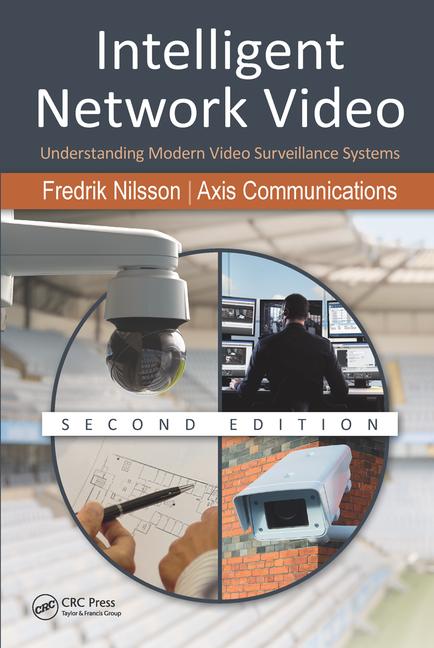Video monitoring: Insurance companies are embracing it; more police departments like it; cities ranging from Chicago and New York to Lancaster, Pa., are doing it; enterprises such as Bank of America and Sonoco have brought it onboard; contract guarding services worldwide see it as a solid way to grow their business model beyond on-site officers; and homeowners use the tool daily.
But will central stations that are making money and growing their dealer base the regular way perceive video monitoring as a next step up?
Going beyond typical alarms, the various iterations of video monitoring do have revenue synergy for the central station and its dealer customers. Adding images adds value and, therefore, a higher price for the central station, shared with its dealer customer, who also has a better chance at expanding the end user’s use of security video.
Video verification of alarms, as one example, meets many existing and emerging local ordinances.
Virtual guarding services bring a new level of offerings to dealers and integrators and can loop into public response. Ron Davis, chief of police for Addison, Texas, says that such “real-time surveillance monitoring technology will be the standard of the future.”
A growing number of traditional alarm monitoring firms have added video verification. There are firms that provide some level of more sophisticated video monitoring. In addition, on the residential level, interactive monitoring — including video — is being hawked by seemingly everyone.
Axis Communications has a video hosting software platform aimed at video service providers, such as security integrators and alarm monitoring centers, to develop video monitoring services over the Internet, according to Steve Surfaro of the Chelmsford, Mass.-based, company.
ADT Corporation of Boca Raton, Fla., with about 6.5 million subscribers, takes a hybrid approach. It can provide video verification; but, on the residential side with its ADT Pulse, it can bundle monitored security alarm with interactive services including video.
Honeywell Total Connect (Melville, N.Y.) remote services can integrate with monitored home security alarms while providing interactivity and video to residential and business users, too.
No matter the approach, however, central station monitoring firms are educators. Clayton Kemp, president/CEO, Universal Monitoring, Charlotte, N.C., points out that “Video monitoring is new for most of our dealers and they are looking for direction on equipment, training, end user pricing and sales strategy. We provide that level of service to our partners and work together in creating a successful business model for video monitored solutions.”
For wholesale central station firms, new ways of monitoring demand a sizeable investment.
Michael Bodnar knows full well. Bodnar, president of Security Partners, Lancaster, Pa., points out that his company is a “full service, wholesale monitoring firm serving dealers only. We have been providing advanced services for three-and-a-half years now.” But, more recently, the firm invested in a new division “with higher levels of monitoring with a dedicated staff for video monitoring using video analytics, IP cameras and protocols to look live into sites as well as voice down to the facility, immediate dispatch, alerts, escort services and guard tours.”
With managed video, Bodnar says that dealers can offer a growing number of services such as virtual guard tours and video verification of alarms that will positively impact their recurring monthly revenue (RMR).
Larry Folsom, president of I-View Now of Henderson, Nev., which focuses on bringing video verification to security systems, agrees. Folsom’s platform enables services for event-based video (pre- and post-alarm), live view cameras, end user Web portals and central station Web portals. The technology is used by Security Partners as well as Protection 1 and others. “The security control panel is a simple and dependable device. Our service leverages those strengths and adds video to events generated by the control panel.” He contends that end users are “more sophisticated than we think,” suggesting that video monitoring, in one form or another, may be more quickly adopted.
Another significant video monitoring player is iVerify of Charlotte, N.C., whose chief technology officer, Jose Chavarria, believes that “remote video monitoring changes the landscape. It is more than a scripted response to an event.” Its infrastructure manages inbound and outbound information coming through its audio and video monitoring center. However, it’s also a matter of the bottom line. For some end users, “there is an economic need to replace a guarding service, for instance. Video analytics is another event driver.”
Chavarria adds that such virtual presence, thanks to video monitoring, leads naturally to business solutions as the system can collect image-based information for viewing and analysis.
In addition to new offering investments and emerging platforms, there are different ways monitoring services can look at video — and don’t even think about the standards and protocols still forming, disappearing and forming again.
• Video verification, long an accepted approach to verify a traditional alarm, started as a way to meet local ordinances, police procedures or regulations covering an entire nation such as in some European countries like Spain. Upon an alarm, the central station views buffered video to validate the alarm prior to informing law enforcement or private response. Most often, monitoring does not control a camera’s movement or change of view. The incoming president of the International Association of Chiefs of Police, Craig Steckler, chief of police at the Fremont, Calif., Police Department, has set one of his goals to take an unbiased and straightforward look at all of the options for reducing false alarms.
• For deterrence and apprehension, video verification can come in a packaged solution: A video verification-enabled camera integrated with a PIR detector sends alarm information and images to a central station and/or the client for public or private response. Traditional central stations and some video-friendly monitoring firms have partnered with vendors in this approach. Adds Kemp, “Deterrence and apprehensions are a win-win-win-win for all stakeholders. The local authorities decrease crime with increased efficiency. The end user has a better chance at protecting assets. The dealer’s word-of-mouth sales increase along with his or her credibility. The operators at the monitoring center are now more involved and excited being a part of stopping a crime.”
• Virtual guard tours often can include multiple controllable cameras, sometimes integrated with on-site sensors or detectors, but images are monitored live through analytics for action that ranges from law enforcement or private response or through the addition of audio deterrence by programmed or live-broadcast messages or strobe lights or other deterrence devices on site. Monitoring is by a central station, a security service contracted by the client, and/or by the client.
• Video-only, or with most emphasis on video, monitoring services center on pioneering firms that provide services that go beyond traditional alarm monitoring. In an outsourced manner, third-party monitoring staff view live or streaming video that can include viewing fixed and controllable cameras as well as through programmed tours. The service can be after-hours or 24/7.
Video storage may be available with all approaches. Moreover, there is additional revenue to be made by the dealer or integrator and the central station for clients who want to view and analyze video for business reasons in addition to security.
As video analytics improves and diversifies, the video monitoring solution will draw more clients through a third party by making video monitoring more efficient and cost-effective.
There are significant challenges as security video moves more forcefully into security applications, including monitoring. While video verification sent to and analyzed by a central station can quickly and more accurately inform public safety for appropriate response for reducing false alarms, without standards and agreed-upon protocols, the huge video data files can quickly become overbearing along this unique “supply chain.”
On the traditional alarm side and using the Automated Secure Alarm Protocol (ASAP), the Central Station Alarm Association International (CSAA) has its Message Broker server, which is a combination of hardware and software intended to perform a middleware function between public safety answering points (PSAP) — centers responsible for answering calls to an emergency telephone number for police, firefighting, and ambulance services — and the alarm monitoring companies that want to take advantage of ASAP. (See related article, “Ready for Automation ASAP,” on page 4.)
The protocol was founded through a joint partnership of CSAA; APCO International, the world’s largest organization of public safety communications professionals; and Nlets, the leading interstate justice and public safety network for the exchange of law enforcement, criminal justice and public safety-related information.
Things are still sort of forming when it comes to security video more generally. Monitoring companies that specialize in video — as compared with the alarm automation firms traditional monitoring firms use — are primarily going their own proprietary ways.
But times are changing. At its annual meeting in mid-October 2012, CSAA formed a Video Committee and two subcommittees to address the various aspects of this emerging and changing dynamic technology, including standards and future technologies. The new standing Video Committee will provide oversight to subcommittees on Managed Services and Enhanced Video Verification. The former subcommittee will make recommendations about the use of new video technologies while providing a comprehensive “map” of available products and services that touch or use video content, including who delivers, consumes or regulates the video service, the parameters of the actual service and how it is delivered.
The Enhanced Video Verification Subcommittee will coordinate efforts to reach out to the law enforcement community with regard to promoting enhanced video verification as a new technology.
Partnership for Priority Video Alarm Response (PPVAR), another new face, is a collection of security companies, law enforcement agencies and insurance industry officials that see value in video verification but with emphasis on deterrence and quick dispatch for apprehensions.
Still, not all central stations are members of CSAA International nor necessarily embrace PPVAR, although CSAA primarily sets the tone across the industry. One PPVAR focus, for instance, is for video to take priority, a sensitive rub in a monitoring world where traditional alarms vastly outnumber video. Beyond video verification coupled with alarm monitoring, other video monitoring opportunities such as virtual guard tours, hosted and managed video, combo audio and video services, emailing of video clips and video storage are most often not as standardized as traditional alarm monitoring. And, at least at this time, such differences provide monitoring firms a way to differentiate their services from the competition, as well as set various levels of pricing for their customers.
Online Exclusive
Discover seven companies' new levels of video monitoring that reach far beyond traditional approaches in "Video Monitoring Firms' Pioneering Approaches."
Video Monitoring Firms' Pioneering Approaches
While a number of traditional alarm monitoring firms now video-verify, and some firms bundle security monitoring with interactive services, especially in residential applications, others are viewed as pioneering the various levels of video monitoring. Among them:
Huffmaster Virtual Security
Troy, Mich.-based Huffmaster, which long has offered contract security officers, offers two general types of solutions related to video: Stand-alone virtual services and on-site guarding integrated with virtual services. The former, VirSec Virtual Security, a Huffmaster Company, aims at reducing the cost of a client’s proprietary or contract security staff. Virtual patrols, escorts and interventions make what the firm calls its remotely located VirSec officer an option for everything from critical infrastructure to vacant real estate. The latter Huffmaster approach teams VirSec officers with existing on-site security personnel. There are also other security video services such as hosted storage and CFATS compliance. VirSec has an authorized reseller partner program.
iVerify
iVerify has built a technology infrastructure that integrates live multimedia communication with other systems via the Internet. iVerify's system manages high volumes of inbound and outbound information coming through its audio and video monitoring center, what the firm calls the “I.” Such multichannel communication covers telephone, Web-based audio and video, email, Web chat, voicemail and Fax, as examples.
Security Partners, Advanced Services Division
In October, Security Partners, the wholesale monitoring company headquartered in Lancaster, Pa., launched an Advanced Services Division for managed video and access control and to boost RMR for its existing and new dealers. No doubt, many of the firm’s dealers were already taking advantage of Security Partners’ advanced video, access control and personal safety services before the division was formed. But now, advanced video services also include remote guard protection, which uses video analytics or choke point IR motion detection; cloud-based video storage, which lets a dealer’s client access video from anywhere and from any device; and central station video verification called DVR Plus to better manage false alarms. The technology relates alarm events with video clips from off-shelf DVR/NVRs, both pre- and post-alarm.
Stealth Monitoring
Dallas-based Stealth Monitoring offers live video surveillance services, which include continuously streaming video, real-time video analytics and customized virtual guard services. The company specializes in the design, installation and service of surveillance equipment and access control. In north Texas, the firm uses its own trained and licensed technicians. Outside of its travel territory, Stealth uses authorized dealers registered in its dealer network.
Universal Monitoring
In addition to its standard services, Universal Monitoring of Charlotte, N.C., boasts remote video monitoring, alarm verification and virtual guard services. It also offers Videofied from RSI Video Technologies of Vadnais Heights, Minn., an integrated package of video, PIR and transmission of an alarm-triggered video clip, as well as Honeywell Total Connect Interactive Services, which also includes streaming video.
Viewpoint CRM
Using video and voice technology, Lowell, Mass.-based Viewpoint’s monitoring center staff conducts remote patrols — virtual guard tours — using a client’s on-site security video surveillance system in real-time. These security solution tools are integrated with a bi-directional audio system. Voice-enabled camera technology provides physical presence and reinforces awareness that cameras are monitored on live patrols. Voice-down technology allows both proactive and reactive prevention of crimes and any other undesired activity. Existing security video systems and design-build opportunities can work with its communications technology. Viewpoint also has brought its technology approach to business solutions such as remotely automating information desks and kiosks in shopping malls.
Westec Intelligent Surveillance
Considered by some to be the grandfather of video monitoring, with a two-way audio twist, Plano, Texas-based Westec’s interactive monitoring services include video verification, in which the firm’s intervention specialists look into an end-user location to verify cause of alarm before dispatch; two-way audio in addition to video surveillance to allow monitoring staff to assist when an alarm is triggered; virtual guarding; and what the company calls snapshot audits, which go beyond security to produce reports on an end-user business’ operations.







.jpg?height=200&t=1657816348&width=200)



